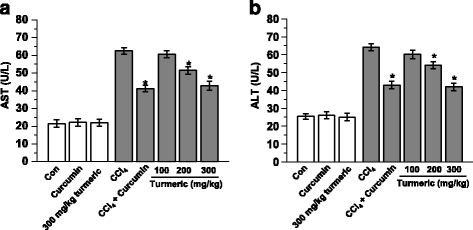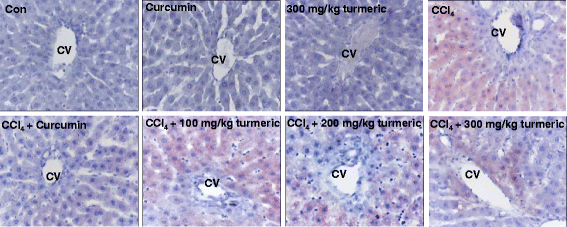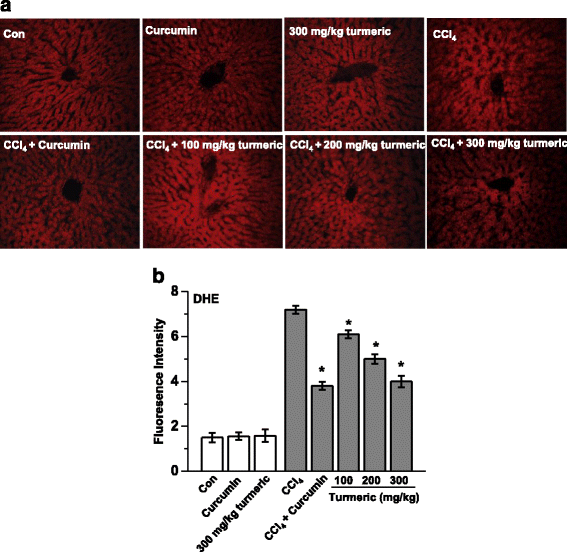Turmeric extract and its active compound, curcumin, protect against chronic CCl4-induced liver damage by enhancing antioxidation
- PMID: 27561811
- PMCID: PMC5000414
- DOI: 10.1186/s12906-016-1307-6
Turmeric extract and its active compound, curcumin, protect against chronic CCl4-induced liver damage by enhancing antioxidation
Abstract
Background: Curcumin, a major active component of turmeric, has previously been reported to alleviate liver damage. Here, we investigated the mechanism by which turmeric and curcumin protect the liver against carbon tetrachloride (CCl4)-induced injury in rats. We hypothesized that turmeric extract and curcumin protect the liver from CCl4-induced liver injury by reducing oxidative stress, inhibiting lipid peroxidation, and increasing glutathione peroxidase activation.
Methods: Chronic hepatic stress was induced by a single intraperitoneal injection of CCl4 (0.1 ml/kg body weight) into rats. Turmeric extracts and curcumin were administered once a day for 4 weeks at three dose levels (100, 200, and 300 mg/kg/day). We performed ALT and AST also measured of total lipid, triglyceride, cholesterol levels, and lipid peroxidation.
Result: We found that turmeric extract and curcumin significantly protect against liver injury by decreasing the activities of serum aspartate aminotransferase and alanine aminotransferase and by improving the hepatic glutathione content, leading to a reduced level of lipid peroxidase.
Conclusions: Our data suggest that turmeric extract and curcumin protect the liver from chronic CCl4-induced injury in rats by suppressing hepatic oxidative stress. Therefore, turmeric extract and curcumin are potential therapeutic antioxidant agents for the treatment of hepatic disease.
Keywords: Carbon tetrachloride; Curcumin; Glutathione; Lipid peroxidase; Oxidative stress.
Figures






References
MeSH terms
Substances
LinkOut - more resources
Full Text Sources
Other Literature Sources
Medical

